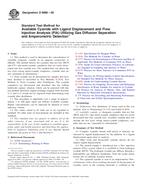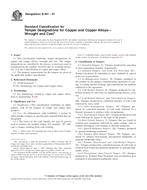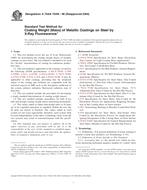1.1 This guide covers selecting one or more appropriate test methods to assess the permeability of all candidate geomembranes for a proposed specific application to various permeants. The widely different uses of geomembranes as barriers to the transport and migration of different gases, vapors, and liquids under different service conditions require determinations of permeability by test methods that relate to and simulate the service. Geomembranes are nonporous homogeneous materials that are permeable in varying degrees to gases, vapors, and liquids on a molecular scale in a three-step process (1 ) by dissolution in or absorption by the geomembrane on the upstream side, (2 ) diffusion through the geomembrane, and (3 ) desorption on the downstream side of the barrier.
1.2 The rate of transmission of a given chemical species, whether as a single permeant or in mixtures, is driven by its chemical potential or in practical terms by its concentration gradient across the geomembrane. Various methods to assess the permeability of geomembranes to single component permeants, such as individual gases, vapors, and liquids are referenced and briefly described.
1.3 Various test methods for the measurement of permeation and transmission through geomembranes of individual species in complex mixtures such as waste liquids are discussed.
1.4 This standard does not purport to address all of the safety concerns, if any, associated with its use. It is the responsibility of the user of this standard to establish appropriate safety and health practices and determine the applicability of regulatory limitations prior to use.
Product Details
- Published:
- 12/10/1995
- Number of Pages:
- 8
- File Size:
- 1 file , 120 KB


